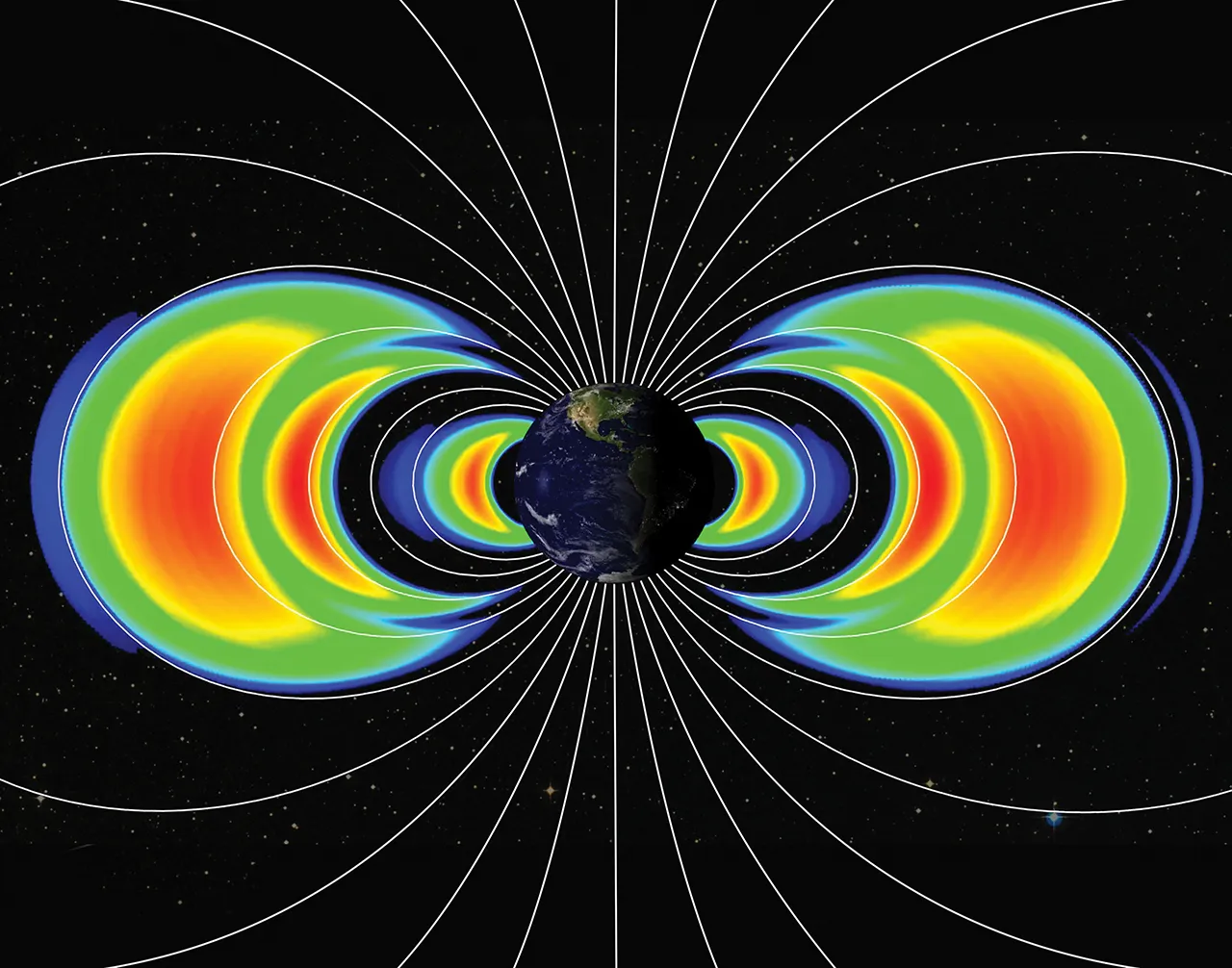Contents
- 1 Unveiling the Mysteries of the SAA and Its Impact on Our World
- 2 Prof. Aécio D’Silva, Ph.D. and Team AquaUniversity
- 3 Let’s Explore Together the South Atlantic Anomaly (SAA), where satellites face the trials of space’s Bermuda Triangle, and its implications for weather and communication systems
- 4 What is the South Atlantic Anomaly?
- 5
- 6 South Atlantic Anomaly – Effects on Communication – Satellite Communications at Risk
- 7 Expanding Influence – The Growing Anomaly
- 8
- 9 South Atlantic Anomaly – What is the Van Allen Radiation Belt?
- 10
- 11 South Atlantic Anomaly – What Are Some Practical Applications of Studying the Van Allen Belts?
- 12
- 13 How Do Scientists Measure and Monitor Radiation Levels Within The Van Allen Belts?
- 14 The Van Allen Probes
- 15 Engineering Radiation Monitor (ERM)
- 16 Ground-Based Observations
- 17
- 18 The South Atlantic Anomaly (SAA) and Weather-Devastating Storms like the Current Floods in South Brazil
Unveiling the Mysteries of the SAA and Its Impact on Our World
Prof. Aécio D’Silva, Ph.D. and Team
AquaUniversity
Let’s Explore Together the South Atlantic Anomaly (SAA), where satellites face the trials of space’s Bermuda Triangle, and its implications for weather and communication systems
South Atlantic Anomaly (SAA) is a peculiar region above South America and the South Atlantic Ocean, notorious for its weaker magnetic field. This anomaly not only poses risks to satellites but also stirs curiosity about its effects on Earth’s weather patterns like the current Rio Grande do Sul catastrophic floodings as well as communication networks.
What is the South Atlantic Anomaly?
The SAA Defined
The SAA is where Earth’s inner Van Allen radiation belt comes closest to the surface, resulting in a higher flux of energetic particles. This phenomenon is due to the non-concentricity of Earth’s magnetic dipole, causing a “dent” in the magnetic protection we usually enjoy.
Consequences for Satellites – High Radiation Levels
Satellites passing through the SAA experience increased radiation, leading to potential malfunctions and data loss. The anomaly’s radiation can knock out onboard computers and interfere with data collection, posing a significant challenge for space missions.
Implications for Weather – Weather Patterns and the SAA
While the SAA’s direct impact on weather remains unclear, its influence on Earth’s magnetic field could contribute to variations in atmospheric conditions. However, current research shows no visible impacts on daily life or weather patterns on the surface.
South Atlantic Anomaly – Effects on Communication – Satellite Communications at Risk
The SAA’s high radiation levels can disrupt satellite communications, affecting GPS, television broadcasts, and other satellite-reliant services. This interference is a reminder of our vulnerability to the whims of space weather.
Expanding Influence – The Growing Anomaly
Recent observations indicate that the SAA is expanding and weakening, which could lead to broader areas of reduced magnetic protection and heightened radiation exposure for satellites.
South Atlantic Anomaly – What is the Van Allen Radiation Belt?
The Van Allen radiation belts are zones of energetic charged particles, primarily electrons and protons, that are trapped by Earth’s magnetic field. Here’s a detailed look at these fascinating regions of space:
Discovery
The existence of the Van Allen belts was confirmed in 1958 by the United States’ Explorer satellites, following earlier research by scientists such as Kristian Birkeland and Carl Størmer. They are named after James Van Allen, who is credited with their discovery.
Composition
The belts consist of two main layers:
- Inner Belt: Ranging from about 640 to 10,000 kilometers above Earth’s surface, this belt contains high concentrations of protons.
- Outer Belt: Extending from 13,500 to 58,000 kilometers, this belt holds a larger number of electrons.
Formation
Most of the particles in the Van Allen belts originate from the solar wind, which is captured and held around Earth by its magnetosphere. The belts are a critical part of Earth’s magnetic environment and play a role in protecting the atmosphere from solar wind particles.
Implications for Space Travel
The radiation within the Van Allen belts poses a challenge for space travel and satellite operations. Spacecraft passing through these belts need adequate shielding to protect sensitive components from radiation damage. During the Apollo missions, NASA carefully planned the trajectory to minimize astronauts’ exposure to the belts’ radiation.
Dynamic Nature
The Van Allen belts are not static; they change in response to solar activity. For instance, intense solar radiation can cause electron “drop-outs,” affecting the density and shape of the belts. In 2013, a temporary third belt was observed, which lasted for four weeks.
Research and Monitoring
Ongoing research and monitoring are crucial for understanding the belts’ behavior and mitigating their effects on space missions. The Van Allen Probes, launched in 2012, have provided valuable data on the belts’ dynamics and are helping scientists understand how to protect technology in space from radiation hazards.
The Van Allen radiation belts are a testament to the dynamic and sometimes hostile environment of space that directly influences our ability to explore and operate in orbit. As our reliance on satellites grows, understanding these belts becomes ever more important for the continued advancement of space technology.
South Atlantic Anomaly – What Are Some Practical Applications of Studying the Van Allen Belts?
Studying the Van Allen belts has several practical applications that are vital for space exploration, weather forecasts and technology. Here are some of the key applications:
- Spacecraft Design and Operations: Understanding the radiation environment of the Van Allen belts is crucial for designing spacecraft that can withstand high radiation levels. This knowledge helps engineers create more robust electronics and shielding for satellites and other spacecraft.
- Mission Planning: Knowledge of the belts’ behavior allows for better planning of spacecraft trajectories. Missions can be designed to avoid the highest radiation areas or to pass through them quickly, minimizing the risk to onboard instruments and systems.
- Astronaut Safety: For manned space missions, it’s essential to understand the radiation exposure risks posed by the Van Allen belts. This information is used to ensure the safety of astronauts, particularly during activities outside the protection of Earth’s atmosphere.
- Space Weather Forecasting: The activity within the Van Allen belts is influenced by space weather events like solar flares and geomagnetic storms. Studying the belts helps in predicting these events’ impact on Earth, which is important for communication and navigation systems that rely on satellites.
- Fundamental Physics Knowledge: The Van Allen belts offer a natural laboratory for studying high-energy particles and plasma physics. Research can lead to new insights into the behavior of charged particles and magnetic fields in space.
- Protecting Satellite Electronics: By understanding how and where the belts fluctuate, scientists can develop strategies to protect the sensitive electronics of satellites from radiation damage, which can disrupt communications and data collection.
These applications show how studying the Van Allen belts advances our scientific understanding and has direct implications for the technologies we rely on every day.
How Do Scientists Measure and Monitor Radiation Levels Within The Van Allen Belts?
Scientists measure and monitor radiation levels within the Van Allen belts using a variety of instruments and methods. Here’s an overview of how this is done:
Satellite-Based Instruments
The primary method for measuring radiation in the Van Allen belts is through instruments aboard satellites. These instruments can include:
- Dosimeters: Measure the dose of radiation that the satellite experiences.
- Spectrometers: Analyze the energy and composition of charged particles.
- Magnetometers: Measure the strength and direction of the magnetic field, which influences particle movement.
The Van Allen Probes
Specifically, the Van Allen Probes, launched by NASA, play a crucial role in monitoring these radiation belts. They carry sophisticated instruments that measure the signatures of various processes affecting particles in the belts over a wide range of time scales and locations.
The probes help determine how particles enter the belts, where they go, and what accelerates them to high speeds and energies.
Engineering Radiation Monitor (ERM)
The Engineering Radiation Monitor (ERM) on the Van Allen Probes measures dose, dose rate, and charging currents, providing valuable data on the radiation environment. This information helps correlate anomalies with radiation environmental factors and supports decisions for future missions with longer lifetimes.
Ground-Based Observations
In addition to satellite measurements, ground-based facilities contribute to monitoring the belts. These include:
- VLF Receivers: Capture very low-frequency electromagnetic waves that interact with particles in the belts.
- Neutron Monitors: Detect secondary particles generated by interactions between cosmic rays and the Earth’s atmosphere, which the belts can influence.
Computational Models
Scientists also use computational models to predict and simulate the behavior of the radiation belts. These models take into account various factors such as solar activity, Earth’s magnetic field configuration, and observational data to forecast changes in the belts.
Collaboration with Other Missions
Data from other missions, such as the Hubble Space Telescope and the International Space Station, which operate at the edges of the radiation belts, also provide indirect measurements and insights into the belts’ behavior.
By combining data from these various sources, scientists can create a comprehensive picture of the radiation environment within the Van Allen belts and how it changes over time. This information is crucial for protecting current and future space missions from the effects of radiation.
The South Atlantic Anomaly (SAA) and Weather-Devastating Storms like the Current Floods in South Brazil
The relationship between the South Atlantic Anomaly (SAA) and weather-catastrophic events is not direct, but some studies explore the potential influence of the SAA on climate patterns. For instance, variations in the South Atlantic subtropical high-pressure system related to the SAA can modulate sea surface temperature anomalies and potentially affect rainfall variability over adjacent land regions.
However, the exact causal relationship between the SAA and specific weather events like the floods in South Brazil remains unclear.
The current floods in South Brazil are likely influenced by a combination of factors, including moisture from the Amazon, warm ocean temperatures, and atmospheric conditions such as the position of the Jetstream.
These factors can lead to extreme rainfall events, expected to become more frequent and intense due to solar activities causing climate change.
Regarding the weather forecast for South Brazil, the population needs to stay informed through local weather services and follow any advisories or evacuation orders issued by authorities. Staying updated on the latest forecasts can help residents prepare for and respond to these catastrophic events.
To conclude, this collaborative intelligence post provides a comprehensive overview of the South Atlantic Anomaly and its effects. The SAA presents a unique challenge to our satellite infrastructure and raises questions about its broader implications. As we explore this magnetic enigma, understanding its dynamics remains crucial for safeguarding our technology and deciphering its role in Earth’s complex system.
References:
Understanding the SAA’s Position and Shape.
https://www.space.com/bermuda-triangle-in-space.html
The SAA’s Impact on Spacecraft and Astronauts
https://www.space.com/bermuda-triangle-in-space.html.
The SAA’s Behavior and Its Historical Context
https://www.space.com/south-atlantic-anomaly-11-million-years.html.
NASA’s Observations on the SAA’s Expansion
https://svs.gsfc.nasa.gov/4840.
https://www.popularmechanics.com/space/moon-mars/a24678/nasa-van-allen-belts-explainer/.
https://vanallenprobes.jhuapl.edu/Mission/index.php.
https://www.nasa.gov/solar-system/studying-the-van-allen-belts-60-years-after-americas-first-spacecraft/.
https://www.nature.com/articles/s41598-023-36190-5.pdf.
https://secwww.jhuapl.edu/techdigest/Content/techdigest/pdf/V33-N03/33-03-Maurer.pdf.
https://journals.ametsoc.org/view/journals/clim/27/21/jcli-d-14-00202.1.xml.
https://theconversation.com/floods-in-south-brazil-have-displaced-600-000-heres-why-this-region-is-likely-to-see-ever-more-extreme-rain-in-future-229965.









